It was the inaugural 2014 meeting of the gentlemen who lunch, a group of guys who, obviously from their youthful yet rugged good looks, retired long before they could claim their pension benefits, They were all also smart enough to have chosen the world’s best place (if you don’t believe me just read Condé Nast Traveler, November 2013) to spend at least the winters of their years.
There were a lot of handshakes, a couple of back pats, and maybe one hug and then it was on to meaningful conversation, the weather. When men are young they talk about things that are hot. When they’re old they talk about things that are cold. There were obvious references to brass monkeys and witch’s breasts but Bob won all bragging rights with his announcement of the expected high that day (yes high, not low) of -29 degrees in his home near Winnipeg.
When men are young they also talk about certain parts of their bodies. When men are old they talk about other parts of their bodies. The table topic had switched to colonoscopies.
Don Day did recall his first time, when the gastroenterologist refused to write a note for Don Day’s Wife saying that his head definitely wasn’t up there. That cracked up a couple of the guys.
We discussed the colonoscopy prep and how it is incredibly simple to consume two litres of cold beer in an hour but one litre of lukewarm water is an impossibility. We talked about the terror of sitting in the waiting room knowing that someone was about to go boldly where no man had ever gone before.
Don Day was ready for someone to sing the chorus of a CCR song and change the words from “Looking Out My” to Looking Up My’ or to have someone mention that it was the only time of life when you know how a muppet feels.
It was obviously time to stop talking and start eating.
The venue was a place Don Day had spotted earlier in the week. He was walking down Calzada de la Luz when he noticed a sign on giant metal doors. “La Pozoleria” it read along with some foreign characters that Don Day had no idea even what language they were in.
Don Day was of course intrigued. Though there had been many places in San Miguel de Allende that served pozole this was the first time he’d known of anyone in town with cojones large enough to actually call their restaurant a pozoleria.
The place was closed for the holidays but Don Day returned a few days later to sample their wares and see if they met the unusually high standards of the gentlemen who lunch. La Pozoleria did and plans were made for a lunch of both pozole rojo and pozole verde with something to refresh the palate in between.
Before I talk about La Pozoleria, let me talk about pozole.
History and hangovers. That’s what Don Day thinks of when he hears the word pozole (and it’s a word I love to hear and to say). Pozole is the most famous pre-Columbian dish in Mexico. And pozole is the most famous pre-morning-after-the-night-before dish in Mexico.
Pozole is basically a pork and corn soup or stew but it has many variations and the original version had an ingredient that is absolutely impossible to find in any San Miguel de Allende butcher shop. Pozole (sometimes posole, pozxole or pozolli) is mentioned in “General History of the Things of New Spain” written around 1500 by Fray Bernandino de Sahagun. If you’re at all interested in Mexican history you’ll probably find it as fascinating as Don Day did. Copyrights have long expired so you can download a copy, in English, here: http://lakesideblogs.com/acrawford/General%20History%20of%20the%20Things%20of%20New%20Spain%20-%20Bernardino%20de%20Sahagun.pdf
Fray Bernandino describes a feast where, in tribute to the god Xipe, Emperor Moctezuma was served a huge pot of pozole topped with the thigh of a prisoner who had been slaughtered by tearing his heart out in a ritual sacrifice. After the Spanish conquest, when cannibalism was banned, pozole con carne humana soon became pozole con carne cerdo as, according to a Spanish priest again, pork tasted “quite similar” to human flesh. The corn in pozole is also historically significant because ancient Mexicans believed that the gods created humans from cornmeal dough.
In pre-Columbian days, pozole was usually reserved for special events and that still holds true today. You’ll often find it at Saturday night fiestas where, as a late night meal, it is believed to soak up some of the evil spirits that the old devil tequila may have stirred. Menudo, the other traditional hangover dish, is consumed the morning after, usually on a Sunday, with the same medicinal claims. Though Don Day has searched for one in San Miguel de Allende in vain, there are restaurants in Mexico (often in the courtyard of someone’s home) that often open just one day a week to serve the pozole.
Pozole is traditionally made from a large kerneled white corn called cacahuazintle (no, I’m not sure how to pronounce it either) that is boiled in a solution containing slaked lime (calcium hydroxide) for a couple of hours until the outside husks are freed and a frothy stew is left. The word pozole meaning frothy or foamy comes from the Nahuatl word potzolli which had a similar meaning. If you want to prepare your own nixtamal (the name of the finished corn), you’ll find excellent step-by-step instructions at http://www.gourmetsleuth.com/Articles/Ethnic-Unique-Foods-Ingredients-645/pozole.aspx. Alternatively, you can simply do like Don Day’s Wife and go to Bonanza or any other supermarket or small grocery store and buy your hominy (the common English term for the corn) in plastic bags or cans. Don Day thinks the stuff in bags is just as good.
Every pozole has a corn base, but from that point on, the ingredients can vary considerably from state to state and town to town. The most basic recipes contain only boiled pork shoulder and salt plus perhaps a little garlic or cumin. Commonly called pozole blanco, that’s how you’ll usually find it in Guadalajara. In some areas, chicken is used instead of pork and in coastal areas, sardines are added. The addition of dried ancho or guajillo chiles is more traditional in the states of Jalisco and Michoacan where it’s called pozole rojo and that is what we began with at La Pozoleria.
The owner has been absent on my visits to La Pozoleria but you don’t need an owner when you have two delightful and dedicated women like Dulce and Maria working for you. I had asked Maria to start us off with a red pozole, She told me that she had simmered pork shoulder for four hours in the broth and that a few pork bones (she didn’t say whether they were from the head or feet) were also added, along with the nixtamal (corn), onions, garlic, cilantro and chili peppers. Each bowl was topped with lettuce, raw onions and radishes and the final touches…dried chilis, oregano and limes…were placed on the table for each guy to decide how much he wanted to add.
The first time Don Day ever had pozole in his life was in San Miguel and his tour guide was Jack, one of the gentlemen who lunch. The last time I wrote about pozole, a photograph caught Jack with pozole trying to stain his beard; this time he was much more careful. After tasting this version of pozole rojo, Jack said, “This is comfort food. Real comfort food. Mexican comfort food.”
Niels, who along with Bob was a pozole virgin before the lunch, said, “This is exciting. Why haven’t I had it before?”
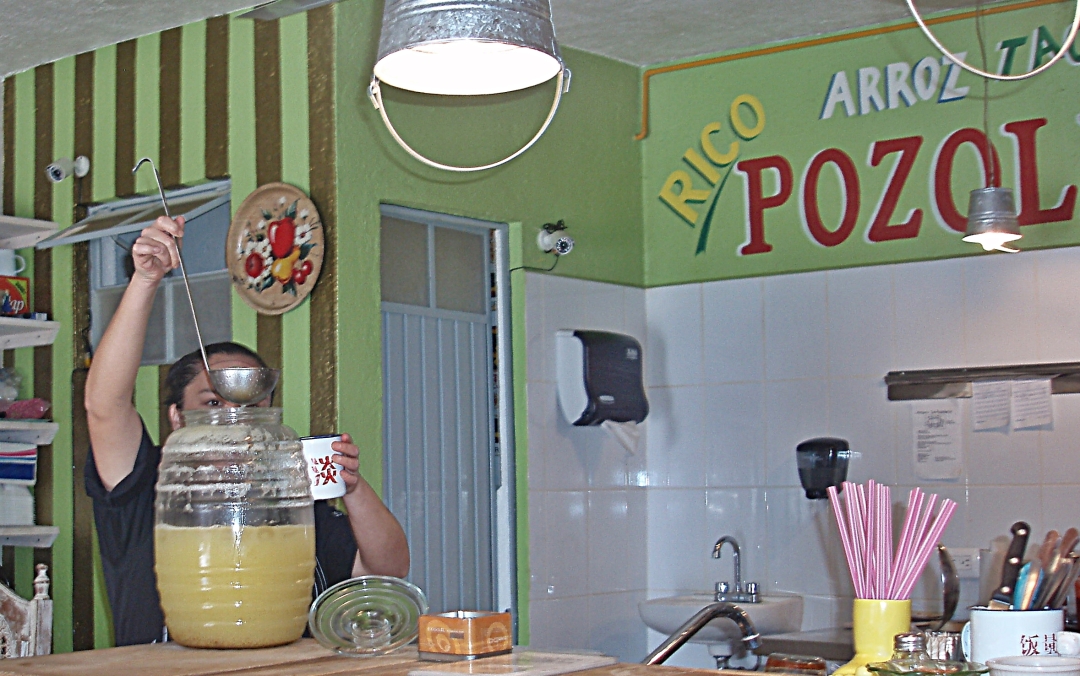
Each day, La Pozoleria makes a fresh fruit juice. The first time I ate at the restaurant it was watermelon. At the gentlemen’s lunch it was pineapple that accompanied our entire meal. Harry, back in San Miguel after four years, after mistakenly thinking that somewhere else might be paradise, pronounced that, though it wasn’t quite a substitute for a beer, the pineapple juice was “absolutely delicious”.
Next came the half time show. For normal human beings I would probably choose a salad for this purpose; for the gentlemen who lunch I chose a tostada. It was piled high with greens though. Maria and Dulce took crispy corn tortillas and then topped them with a beans and pork spread, lettuce, radishes, avocado, crumbled cheese and salsa. They were good.
In the state of Guerrero, the preferred color for pozole is green. Pozole verde usually includes tomatillos and jalapenos instead of red ancho chiles and so did Maria’s version. Ben thought it had a fresher taste than the red, probably the result of the tomatillo tastes coming through. Rich said, “The green seems a little thinner; the red was more full-bodied.”
Everyone agreed that both the pozole rojo and pozole verde at La Pozoleria had very generous helpings of pork in each of them, particularly for the price (27 pesos for a chico bowl, 38 pesos for a grande…and no, Don Day didn`t just make one of his frequent typos on those numbers).
You’d expect that the design and decor of La Pozoleria would match the menu and be rather traditional. It’s not. It’s not at all. It looks like a place where Andy Warhol and Roy Lichtenstein might have lunched with Edie Sedgwick and Nico in the sixties. The pop art is not only on the wall, it travels delightfully over the tables and is the obvious reason for those strange, foreign characters on the front door. If you’ve been to Cafe Rama in San Miguel, you’ll probably suspect, like Don Day does, that the artist is one in the same.
Drinks are served in tin cups, again with those intriguing foreign letters that are on the door, and the cutlery has the same camping feel to it. Don Day liked it but Don Day`s Wife who only likes camping in luxury hotel rooms probably wouldn`t.
The kitchen of La Pozoleria is open, wide open, with a few stools at the counter and seating for about sixteen in the rest of the room. Don Day had a bird’s eye view as he watched Maria and Dulce from the bar when he ate there the first time; he was very impressed by the efficiency of the operation and the meticulous attention to food handling.
There’s a sophistication to the room that you won’t find in any other place in town that specializes in pozoleria. Expats are noticeably absent from other pozole spots but a few have already discovered La Pozoleria during the six months it`s been open. Dare Don Day say that the ladies who lunch would feel just as comfortable as the gentlemen.
Before we left, Don Day insisted on a vote. Which was better, red pozole or green. First I asked the two ladies who spend 50 hours a week in the company of pozole. Maria said rojo. Dulce gave her a disbelieving look and said pozole verde. Next came the gentlemen. Four raised their hands for rojo. Then five raised theirs for verde. Then all agreed that with either style you could please all of the people all of the time no matter what the color.
When you finish a feast of pozole there’s a glow you feel in your head as well as your stomach. As we walked out of La Pozoleria and walked up Calle Hernandes Macias. I compared it to an alcohol buzz. Pozole is not a sophisticated food. It’s a cook’s dish not a chef’s dish. I’m thankful that celebrity chefs aren’t adding trendy little nuances to take pozole to another level. It belongs where it is as a simple soup. It’s comfort food and sometimes we all need comforting. Don Day feels very comfortable at La Pozoleria.
Antojeria La Pozoleria is located at Calzado de la Luz 51A, almost directly across from the north end of Hernandez Macias. It is open from 12 Noon to 9:30 pm every day except Monday.


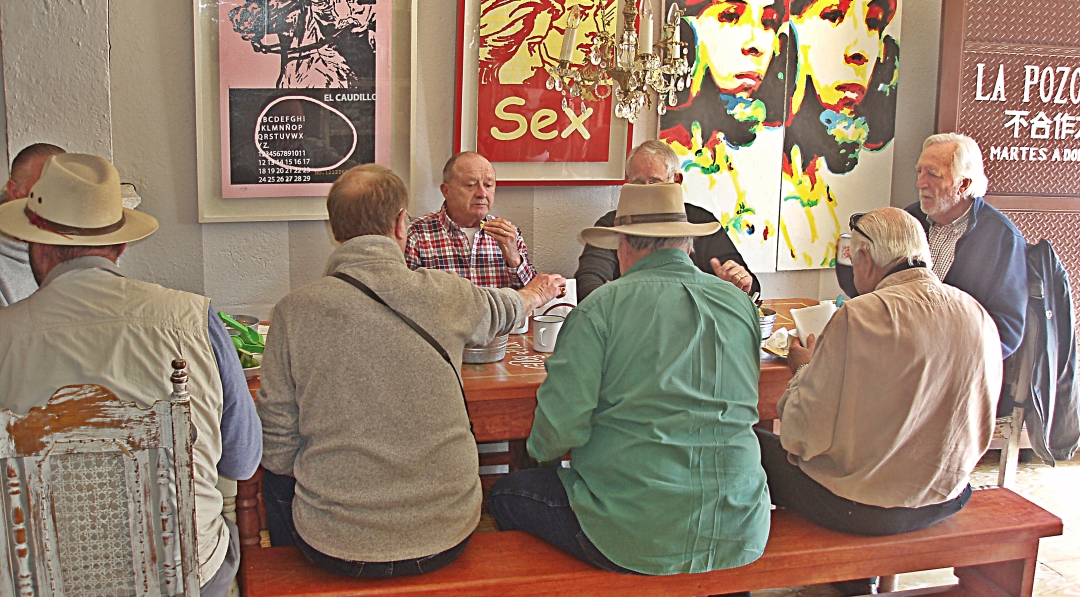
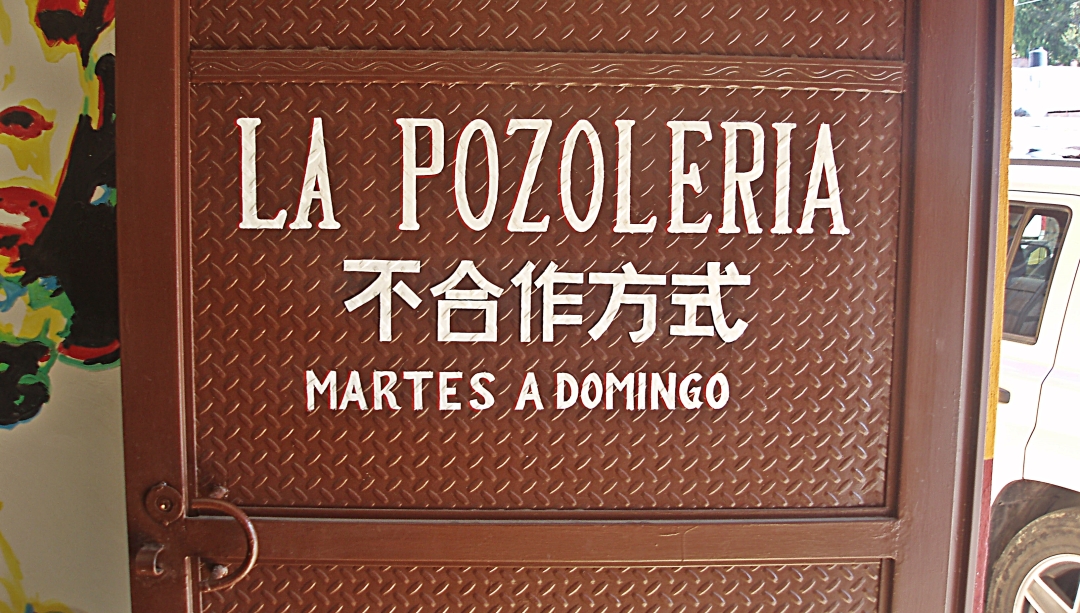



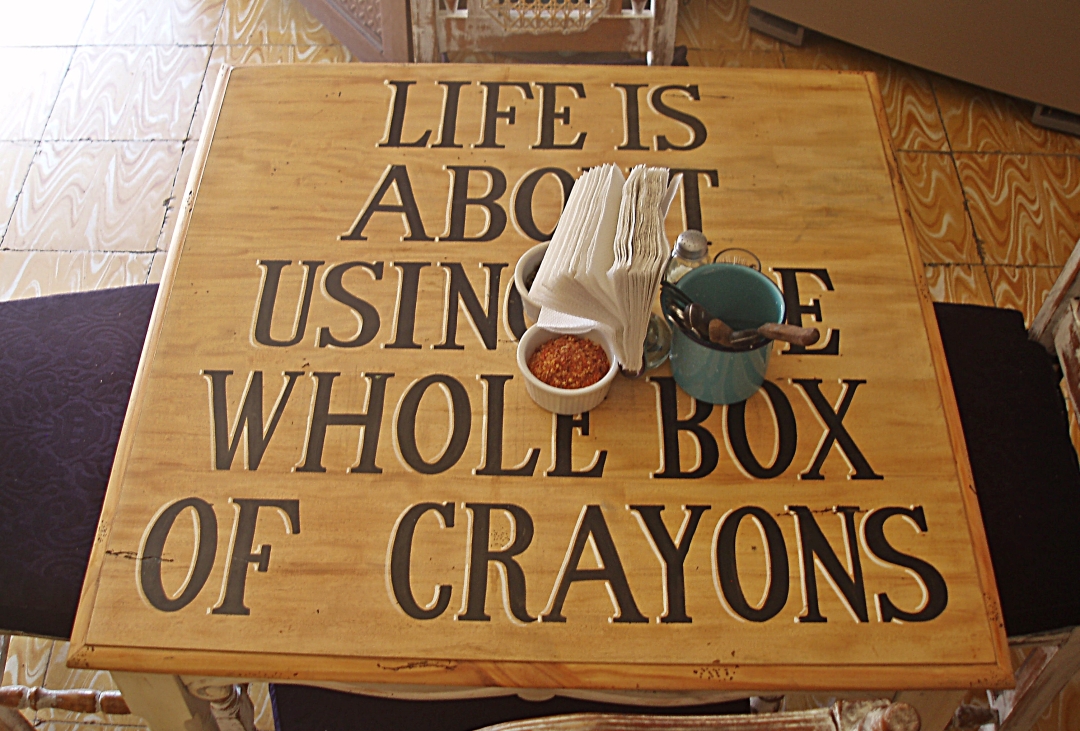
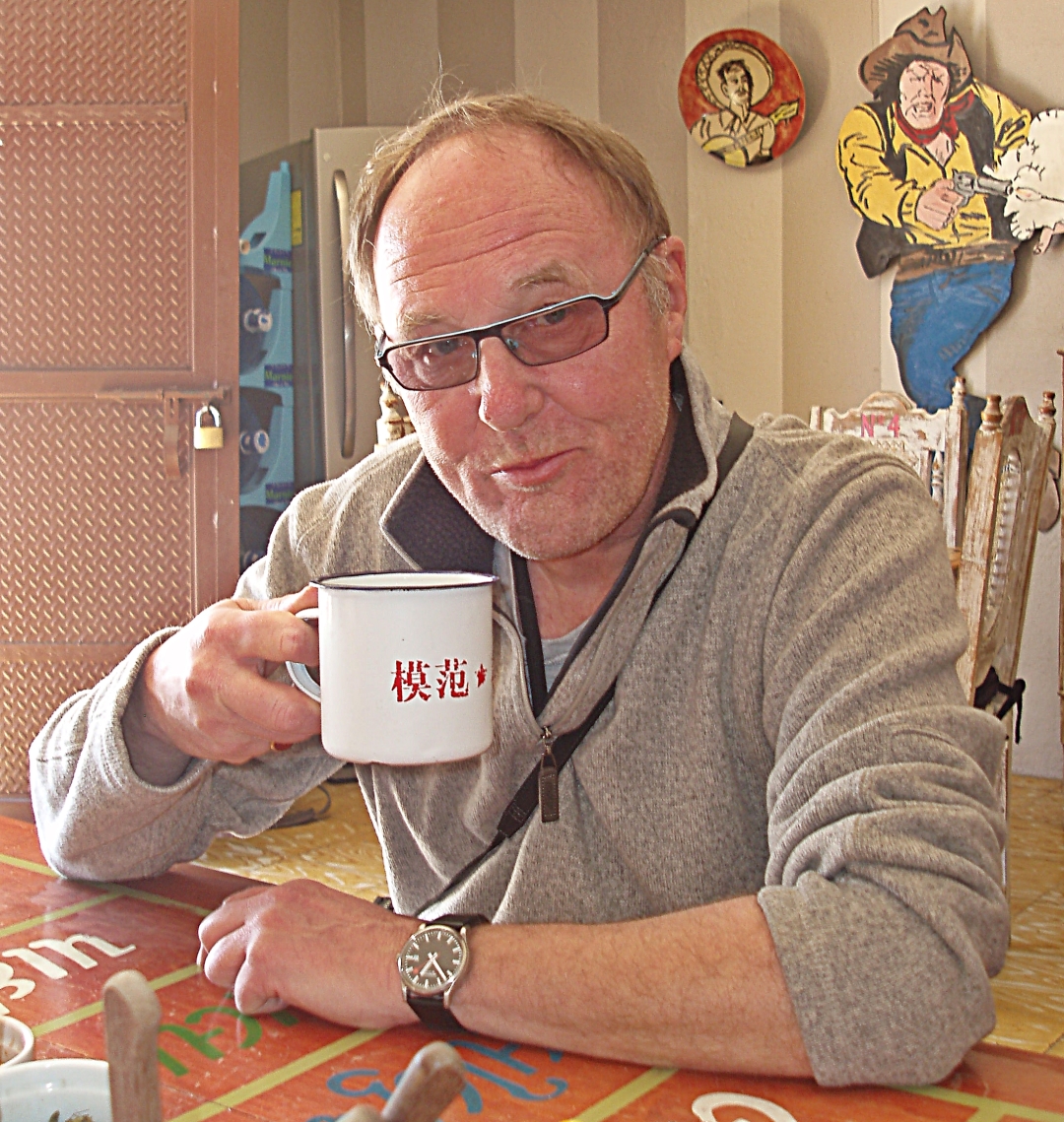

I thought it was menudo reputed to cure a hangover. Am I wrong? Love your blog, Thanks!
Sent from my iPad
>
Menudo does its magic the morning after, pozole late on the actual night. Always wondered if I could drink twice as much if I did both.
I think i enjoy your review as much as you enjoy eating in La Pozoleria. My favorite part was “History and hangovers. Thats what Don Day things when he hears the word Pozole…” I think none mexican couldn’t explain better lol!
Now you’ve gone and done it! You have given away our perfect hide out! Now where are we supposed to eat on Sunday when our shop is closed???
Great write up of a fantastic place. Dulce and Maria are the sweetest gals I have met in a restaurant here in San Miguel. I sure hope the mysterious owner hangs on to them!
And in case you are curious; Boris votes Red and I vote Green… you cannot agree on everything in a marriage!